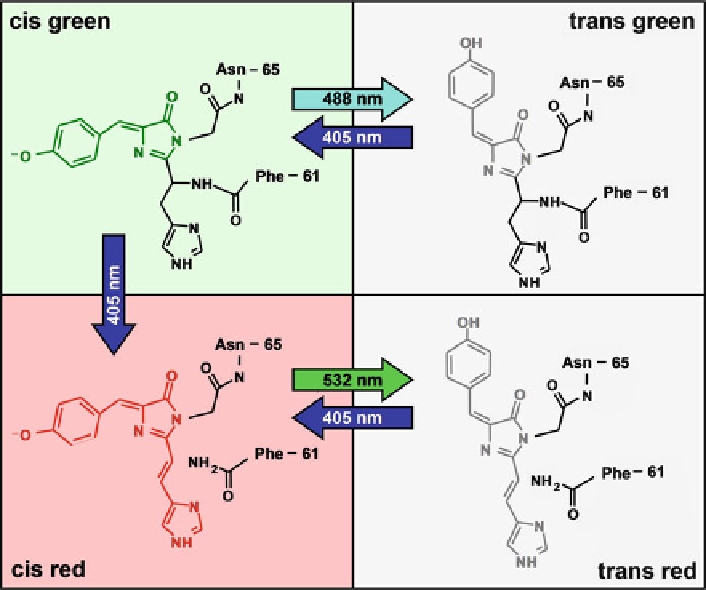Biology Reference
In-Depth Information
the thermodynamically more stable isomeric state. This relaxation process can be
markedly enhanced with light.
Combining Reversible and Irreversible Photoactivation in IrisFP
The Phe173Ser variant of tetrameric EosFP, denoted as IrisFP, incorporates both
reversible and irreversible phototransformations (Fig.
7
). In its green fluorescent
state, IrisFP displays reversible photoswitching between a bright and a dark state,
based on a
cis-trans
isomerization of the chromophore [
12
]. Like its parent protein
EosFP, IrisFP also photoconverts irreversibly to a red-emitting state under violet
light. The red form of IrisFP again exhibits reversible photoswitching, which also
involves a
cis-trans
isomerization of the chromophore.
With this combination of two modes of photoactivation within one FP, photo-
conversion from a green to a red emitting form, and photoswitching between a
fluorescent and a nonfluorescent state in both forms, it has become possible to
perform pulse-chase experiments with super-resolution using photoactivation local-
ization microscopy (PALM, Fig.
8
). PALM is an imaging technique based on the
Fig. 7 Chromophore species in IrisFP, generated by illumination with light of specific wave-
lengths (as indicated by the
arrows
)

Search WWH ::

Custom Search